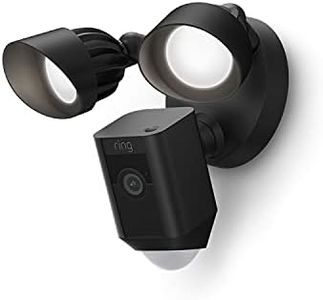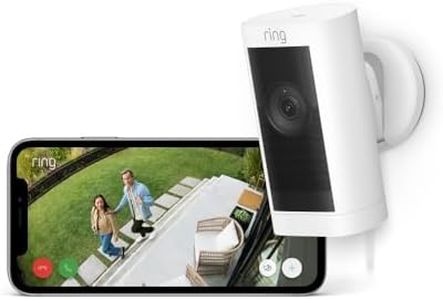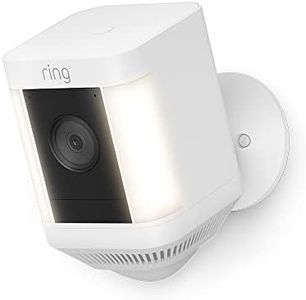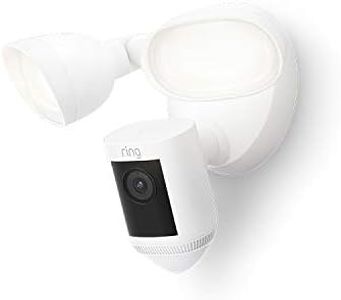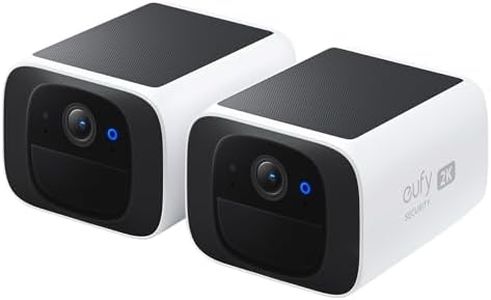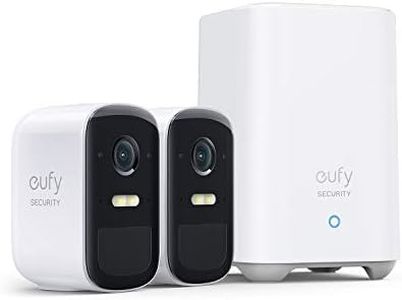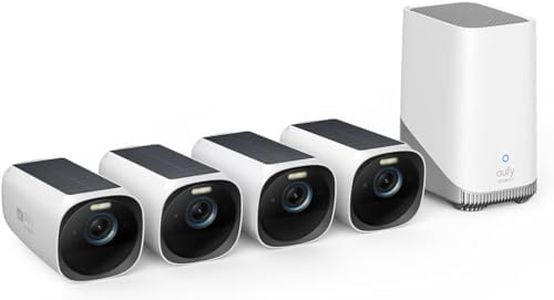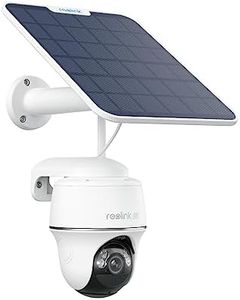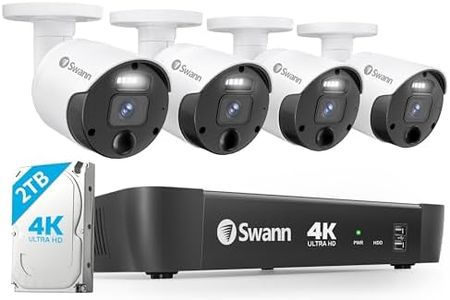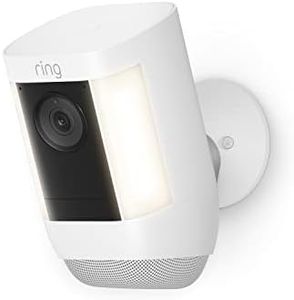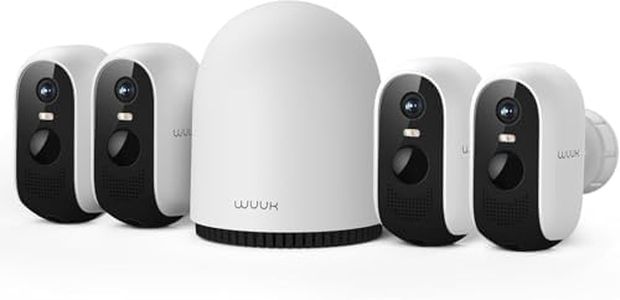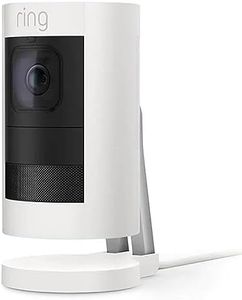We Use CookiesWe use cookies to enhance the security, performance,
functionality and for analytical and promotional activities. By continuing to browse this site you
are agreeing to our privacy policy
10 Best Outdoor Cameras
From leading brands and best sellers available on the web.Buying Guide for the Best Outdoor Cameras
Outdoor cameras are powerful tools for monitoring your property, deterring unwanted visitors, and providing peace of mind. When picking the best outdoor camera for your needs, it’s important to focus on features that suit your home environment, how you want to monitor the footage, and whether you want a system that’s easy to install or one with extra features for security. Before choosing, consider where the camera will be mounted, what kind of recording or notifications you want, and how you’ll access the camera footage—on your phone, computer, or another device.ResolutionResolution refers to how clear and detailed the footage from your camera will be. Higher resolution means a sharper image and more details, which is especially important for identifying people or objects in recordings. Common resolutions include 720p (basic HD), 1080p (Full HD), and higher like 2K or 4K. For general monitoring, 1080p is usually sufficient, but if you want to capture fine details or cover a larger area, consider 2K or 4K cameras. Your choice should be guided by how much clarity you need and the size of the area you want to monitor.
Field of ViewField of view (FOV) describes how much of the area the camera can see at once, measured in degrees. A wider field of view covers more area with one camera, but very wide angles can sometimes distort the image. Standard FOVs range from about 90° (narrow, more focused) up to 160° (ultra-wide, covers a large area). If you want to monitor a wide yard, choose a broader field of view; for focusing on specific entry points, a narrower angle can provide more detail.
Night VisionNight vision allows outdoor cameras to record clear video in low light or no light conditions. Good night vision is crucial if you want to monitor your property around the clock. Cameras may have different night vision ranges, such as 10 meters (for porches or small areas) up to 30 meters or more (for large yards). Think about how much area you want to keep an eye on at night, and check if the camera uses infrared or color night vision, based on your need for either basic visibility or extra detail.
Weather Resistance (IP Rating)Weather resistance ensures your camera keeps working, no matter the outdoor conditions. Look for an IP (Ingress Protection) rating—a common system that rates dust and water resistance. For outdoor use, IP65 or higher is often recommended, meaning the camera can handle rain, dust, and sometimes even snow. Think about your local weather: if you live somewhere with harsh conditions, pick a camera with a stronger IP rating to ensure reliability year-round.
Power SourceOutdoor cameras can be powered in different ways: plugged into an outlet, battery powered, or even solar powered. Plug-in cameras offer uninterrupted operation but need you to run wires to them; battery-powered models are flexible to install and don’t need cables, but the batteries must be recharged or replaced; solar-powered options are great for off-grid use. Consider how close your camera will be to a power source or if you prefer a wire-free setup, and pick the style that fits your installation type and convenience.
ConnectivityCameras connect to your systems via Wi-Fi, Ethernet, or sometimes cellular networks. Wi-Fi is convenient but requires a strong signal, especially if the camera is far from your router; Ethernet gives a stable connection and power (if the camera supports Power over Ethernet), but requires cabling. Cellular cameras use SIM cards and are good for remote locations. Choose connectivity based on how easy it is to get a reliable internet connection where you’ll install the camera.
Storage OptionsStorage refers to where your camera saves video footage: locally (on a memory card or local recorder) or in the cloud. Local storage is handy and usually has no extra fees, but footage could be lost if the camera is damaged or stolen. Cloud storage allows for easy viewing and backup from anywhere, but often requires a monthly subscription. Think about how important it is to access or save your footage remotely, or whether you want to avoid ongoing costs, to decide what storage option fits your needs.
Motion Detection and AlertsMotion detection allows your camera to begin recording or send alerts only when something moves in its field of view. More advanced cameras let you customize zones or adjust sensitivity, which helps reduce false alarms from things like passing cars or pets. If you want to be notified instantly of unusual activity or only monitor certain spots, look for a camera with flexible motion detection settings to match your preferences.
Audio FeaturesSome outdoor cameras offer audio recording and two-way talk, meaning you can listen to what’s happening or speak to someone through the camera using your phone. This is especially useful for communicating with delivery people or warning off intruders. If you want to interact or hear what’s happening outside, choose a camera with built-in microphone and speaker features.
